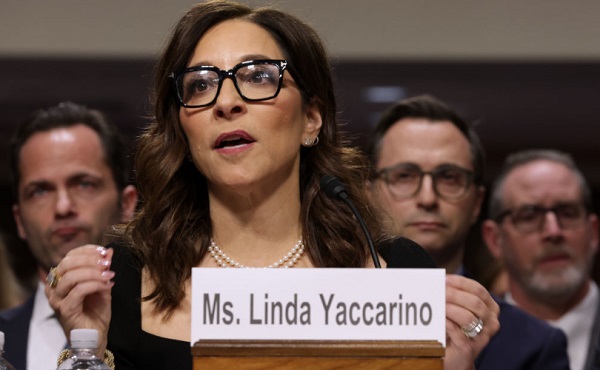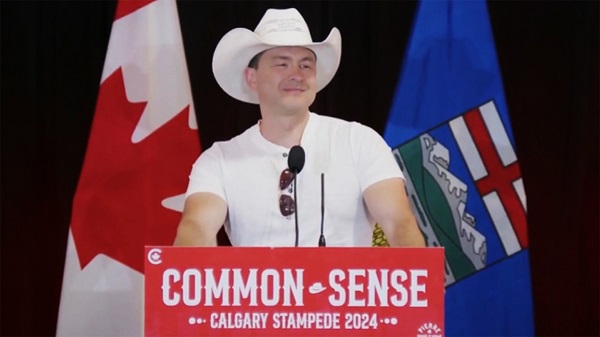Economy
Former socialist economist explains why central planning never works

From the Fraser Institute
Central planning from the inside—an interview with a Soviet-era economist
In our descriptions of socialism in Poland and Estonia, we often quoted firsthand accounts of Poles and Estonians who lived through the period. These were workers, consumers, victims of oppression and resistance fighters. One voice that we didn’t capture was that of the planner—the government official charged with making the economy work, despite socialism’s enormous handicaps.
To better understand that perspective, I recently interviewed Gia Jandieri, an economist who worked for the State Supply Committee in Georgia from 1984 to 1989.
In 1989 Gia cofounded the very first non-governmental organization in Soviet Georgia (the Association of Young Economists) to push for market economic education. And in 2001 he established a think-tank, the New Economic School, to promote economic freedom. The New Economic School has been a full member of the Economic Freedom Network since 2004.
Here’s our discussion (lightly edited for readability):
Matthew Mitchell (MM):
How did you become an economist and a Soviet planner?
Gia Jandieri (GM):
It was accidental. In 1984 my mother worked at the Gossnab (the State Supply Committee for the Central Planning Authority) and she offered to introduce me to her boss. At that time I was only 23 years old and had graduated from the Georgian Polytechnical Institute. My knowledge of economics was mostly from life and family experience (my parents worked at a metallurgical plant).
But as a student in 1979 I had had what I thought were a few strange discussions with a teacher of political economy. Like most teachers, he was no true believer in socialism (it was hard for anyone to believe at that time). But he was required to teach the propaganda. What surprised me was that he was willing to publicly agree with me about my suspicions that the system was failing and might even collapse. This was rare, and he was taking a risk. But it also inspired me. It is also important to note that he wanted to hide his hesitation about Marxism and the Soviet system and he also wanted me to stop my questions, and/or stop attending his lectures (which was of course not allowed). I recall he told me: “either I report you or someone reports both of us for having prohibited discussions.”
When I finished my university study of engineering, I was already sure I wanted to be an economist. So, when the opportunity arose in 1984 to work at the State Supply Committee, I seized it.
MM:
Tell us a little bit about the job of a planner. What were your responsibilities? And how did you go about doing them?
GJ:
Our department inside of Gossnab was responsible for monitoring the execution of agreements for production of goods and government orders. My task was to verify that the plans had been executed correctly, to find failures and problems, and to report to the higher authorities.
This included reading lots of reports and visiting the factories and their warehouses for auditing.
The Soviet economy had been in a troublesome condition since the 1970s. We (at the Gossnab) had plenty of information about failures, but it wasn’t useful. We knew that the quality of produced goods was very low, that any household good that was of usable quality was in deficit, and that the shortages encouraged people to buy on the black market through bribes.
In reality, a bribe was a substitute for a market-determined price; people were interested in paying more than the official price for the goods they valued, and the bribe was a way for them to indicate that they valued it more than others.
The process of planning was long. The government had to study demand, find resources and production capacities, create long-run production and supply plans, compare these to political priorities, and get approval for general plans at the Communist Party meetings. Then the general plans needed to be converted to practical production and supply plans, with figures about resources, finances, material and labour, particular producers, particular suppliers, transportation capacities, etc. After this, we began the process of connecting factories and suppliers to one another, organizing transportation, arranging warehousing, and lining up retail shops.
The final stage of the planning process was to send the participating parties their own particular plans and supply contracts. These were obligatory government orders. Those who refused to follow them or failed to fulfill them properly were punished. The production factories had no right or resources to produce any other goods or services than those described in the supply contracts and production plans they received from the authorities. Funny enough, though, government officials could demand that they produce more goods than what was indicated in the plans.
MM:
What made your job difficult? Let’s assume that a socialist planner is 100 per cent committed to the cause; all he or she wants to do is serve the state and the people. What makes it difficult to do that?
GJ:
There were several difficulties. We had to find appropriate consumer data and compare it to the data of suppliers (of production goods mostly). I was working with several (5-15) factories per year. I needed to have current and immediate information, but the state companies were always trying to hide or falsify their reports. In some cases, waste and theft could be so significant that production had to be halted.
The planners invested vast sums of money and time in data collection and each had special units of data processing.
This was a technical exercise and had nothing to do with efficiency or usefulness. The collected data was outdated by the time it was printed. The planning, approval, and execution processes could take many years to complete, and by the time plans were ready, demand had usually changed, creating deficits of what was demanded and surpluses of what was not demanded. The planners, no matter how dedicated or intelligent they might be, simply couldn’t meet the demands of the customers.
Central planning was not an easy exercise. The central planners needed to understand what was needed—both production supplies and consumer goods. But, of course, we had no way of knowing what people truly wanted because there was no market. Consumers weren’t free to choose from different suppliers and new suppliers weren’t free to enter the market to offer new or slightly different goods.
One of the more helpful ways to find out what people wanted was to look at what consumers in the West wanted since they actually had economic freedom and their demands were quickly satisfied. The government also did a lot of industrial spying to steal Western production ways and technologies.
MM:
Were most of the planners you encountered 100 per cent committed to the cause? Were they incentivized to serve the cause?
GJ:
Some of the staffers were dedicated to their work. Others were mostly thinking about how they could obtain bribes from the production factories as a reward for closing their eyes to mismanagement and failure. The planners were also involved in more significant corruption to allow the production factories to have extra materials and financial resources so they could produce for the black market or so they could simply steal.
Then the revenue from these bribes would be divided among all personnel from different agencies (like the Price Committee, Auditing (“Public Control”), and several other agencies charged with inspections). So, in fact, the system generated corruption as a substitute for official incentives. If anything was still operating, this was mostly due to these corrupt incentives and not in spite of them.
The planning system was quite complex and involved many governmental offices though the main decisions were made by the Communist Party. Planning authorities would report to the Party leadership what they thought would be possible to produce and Party leaders would inevitably demand higher quantities.
Gosplan was bureaucratic to its core, both in principle and character. Nobody was allowed to innovate other than planned/artificial innovation. Everyone had to work only by decrees and orders coming from the political leadership. The political orders and bribes were the only engines that were moving anything. Market incentives didn’t exist. Bonuses (premia) were awarded according to bureaucratic rules, and, paradoxically, these destroyed the motivation of the genuinely hard workers.
MM:
Moving beyond economics a bit, how did the socialist system affect other aspects of life? Culture, families, relationships, civil institutions?
GJ:
One of the examples is Western pop-music. Soviet propaganda tried to hide Western culture. Music schools mostly taught Russian classical music and some folk music of various Soviet ethnic nationalities, but it was mostly Russian.
Jazz and hard rock were not prohibited but very much limited. That of course encouraged smuggling and illegal dissemination, as in every sector. Soviet music factories were buying some rights to the music (for instance the Beatles, Louis Armstrong and Ella Fitzgerald). But these recordings were only available in limited quantities and were of bad quality in order to limit their influence.
Small illegal outfits would make unofficial and illegal copies of any popular western music (not classical).
Cultural institutions like theatre or cinema were harshly censored and mostly served the propaganda machine. The people involved in these sectors did what all producers of goods did. They needed to lobby their benefactors in the bureaucracy, bribing and currying favour with them in different ways. It was said that only one out of four films produced would be shown in the cinemas. The other three films were only produced so studios could steal the resources and obtain higher reimbursements.
Before Soviet rule, Georgia was a property rights and ethics-based society. We have ancient proverbs that testify to this. The Soviets killed the ethical leaders, the property-owning elite, and confiscated their property. The stolen property was supposed to be held in common. In fact, the bureaucracy took it.
State ownership of property opened the way to waste and theft of construction and production materials, office inventory, fertilizer, harvested agricultural products, etc.
In Georgia, one bright spot was underground education. Georgians succeeded in growing a network of informal tutors who effectively operated despite very harsh efforts by the authorities to quash them. These skillful teachers prepared the young people for university exams. This was so widespread that some successful young people (including my wife and friends, for instance) started offering private (completely illegal) teaching services when they were university students.
MM:
To this day, socialism remains alluring to many in the West, especially young people. What do you have to say to the 46 per cent of Canadians aged 18-34 who support socialism?
GJ:
Very simply, it is a mistake to think socialism fails because of the wrong managers. This mistake allows people to think that it’ll work the next time it is tried, if we just have better people. In fact the opposite is true—socialism invites the wrong managers. It doesn’t reward a great manager who tries to improve the system but a person who can adapt to and accept the corruption, waste and theft. Socialism also encourages corruption. When more resources are in the control of politicians and the bureaucracy, there is more favouritism, privilege, and discrimination. Jobs and business opportunities are based on privilege rather than market competition. This means naïve people will always be cheated by brazen liars and manipulators.
Poor people are told that the state is under their control but in fact the bureaucracy and political hierarchy control everything.
In socialism, nature and natural resources are abused and wasted. The Tragedy of the Commons runs rampant without private property, voluntary cooperation, and ethics. The government tries to manage everything centrally and totally fails because it lacks dynamic information, competitive discipline, and proper incentives.
Business
Trump confirms 35% tariff on Canada, warns more could come

Quick Hit:
President Trump on Thursday confirmed a sweeping new 35% tariff on Canadian imports starting August 1, citing Canada’s failure to curb fentanyl trafficking and retaliatory trade actions.
Key Details:
- In a letter to Canadian Prime Minister Mark Carney, Trump said the new 35% levy is in response to Canada’s “financial retaliation” and its inability to stop fentanyl from reaching the U.S.
- Trump emphasized that Canadian businesses that relocate manufacturing to the U.S. will be exempt and promised expedited approvals for such moves.
- The administration has already notified 23 countries of impending tariffs following the expiration of a 90-day negotiation window under Trump’s “Liberation Day” trade policy.
Diving Deeper:
President Trump escalated his tariff strategy on Thursday, formally announcing a 35% duty on all Canadian imports effective August 1. The move follows what Trump described as a breakdown in trade cooperation and a failure by Canada to address its role in the U.S. fentanyl crisis.
“It is a Great Honor for me to send you this letter in that it demonstrates the strength and commitment of our Trading Relationship,” Trump wrote to Prime Minister Mark Carney. He added that the tariff response comes after Canada “financially retaliated” against the U.S. rather than working to resolve the flow of fentanyl across the northern border.
Trump’s letter made clear the tariff will apply broadly, separate from any existing sector-specific levies, and included a warning that “goods transshipped to evade this higher Tariff will be subject to that higher Tariff.” The president also hinted that further retaliation from Canada could push rates even higher.
However, Trump left the door open for possible revisions. “If Canada works with me to stop the flow of Fentanyl, we will, perhaps, consider an adjustment to this letter,” he said, adding that tariffs “may be modified, upward or downward, depending on our relationship.”
Canadian companies that move operations to the U.S. would be exempt, Trump said, noting his administration “will do everything possible to get approvals quickly, professionally, and routinely — In other words, in a matter of weeks.”
The U.S. traded over $762 billion in goods with Canada in 2024, with a trade deficit of $63.3 billion, a figure Trump called a “major threat” to both the economy and national security.
Speaking with NBC News on Thursday, Trump suggested even broader tariff hikes are coming, floating the idea of a 15% or 20% blanket rate on all imports. “We’re just going to say all of the remaining countries are going to pay,” he told Meet the Press moderator Kristen Welker, adding that “the tariffs have been very well-received” and noting that the stock market had hit new highs that day.
The Canadian announcement is part of a broader global tariff rollout. In recent days, Trump has notified at least 23 countries of new levies and revealed a separate 50% tariff on copper imports.
“Not everybody has to get a letter,” Trump said when asked if other leaders would be formally notified. “You know that. We’re just setting our tariffs.”
Business
UN’s ‘Plastics Treaty’ Sports A Junk Science Wrapper


From the Daily Caller News Foundation
By Craig Rucker
According to a study in Science Advances, over 90% of ocean plastic comes from just 10 rivers, eight of which are in Asia. The United States, by contrast, contributes less than 1%. Yet Pew treats all nations as equally responsible, promoting one-size-fits-all policies that fail to address the real source of the issue.
Just as people were beginning to breathe a sigh of relief thanks to the Trump administration’s rollback of onerous climate policies, the United Nations is set to finalize a legally binding Global Plastics Treaty by the end of the year that will impose new regulations, and, ultimately higher costs, on one of the world’s most widely used products.
Plastics – derived from petroleum – are found in everything from water bottles, tea bags, and food packaging to syringes, IV tubes, prosthetics, and underground water pipes. In justifying the goal of its treaty to regulate “the entire life cycle of plastic – from upstream production to downstream waste,” the U.N. has put a bull’s eye on plastic waste. “An estimated 18 to 20 percent of global plastic waste ends up in the ocean,” the UN says.
As delegates from over 170 countries prepare for the final round of negotiations in Geneva next month, debate is intensifying over the future of plastic production, regulation, and innovation. With proposals ranging from sweeping bans on single-use plastics to caps on virgin plastic output, policymakers are increasingly citing the 2020 Pew Charitable Trusts report, Breaking the Plastic Wave, as one of the primary justifications.
But many of the dire warnings made in this report, if scrutinized, ring as hollow as an empty PET soda bottle. Indeed, a closer look reveals Pew’s report is less a roadmap to progress than a glossy piece of junk science propaganda—built on false assumptions and misguided solutions.
Pew’s core claim is dire: without urgent global action, plastic entering the oceans will triple by 2040. But this alarmist forecast glosses over a fundamental fact—plastic pollution is not a global problem in equal measure. According to a study in Science Advances, over 90% of ocean plastic comes from just 10 rivers, eight of which are in Asia. The United States, by contrast, contributes less than 1%. Yet Pew treats all nations as equally responsible, promoting one-size-fits-all policies that fail to address the real source of the issue.
This blind spot has serious consequences. Pew’s solutions—cutting plastic production, phasing out single-use items, and implementing rigid global regulations—miss the mark entirely. Banning straws in the U.S. or taxing packaging in Europe won’t stop waste from being dumped into rivers in countries with little or no waste infrastructure. Policies targeting Western consumption don’t solve the problem—they simply shift it or, worse, stifle useful innovation.
The real tragedy isn’t plastic itself, but the mismanagement of plastic waste—and the regulatory stranglehold that blocks better solutions. In many countries, recycling is a government-run monopoly with little incentive to innovate. Meanwhile, private-sector entrepreneurs working on advanced recycling, biodegradable materials, and AI-powered sorting systems face burdensome red tape and market distortion.
Pew pays lip service to innovation but ultimately favors centralized planning and control. That’s a mistake. Time and again, it’s been technology—not top-down mandates—that has delivered environmental breakthroughs.
What the world needs is not another top-down, bureaucratic report like Pew’s, but an open dialogue among experts, entrepreneurs, and the public where new ideas can flourish. Imagine small-scale pyrolysis units that convert waste into fuel in remote villages, or decentralized recycling centers that empower informal waste collectors. These ideas are already in development—but they’re being sidelined by policymakers fixated on bans and quotas.
Worse still, efforts to demonize plastic often ignore its benefits. Plastic is lightweight, durable, and often more environmentally efficient than alternatives like glass or aluminum. The problem isn’t the material—it’s how it has been managed after its use. That’s a “systems” failure, not a material flaw.
Breaking the Plastic Wave champions a top-down, bureaucratic vision that limits choice, discourages private innovation, and rewards entrenched interests under the guise of environmentalism. Many of the groups calling for bans are also lobbying for subsidies and regulatory frameworks that benefit their own agendas—while pushing out disruptive newcomers.
With the UN expected to finalize the treaty by early 2026, nations will have to face the question of ratification. Even if the Trump White House refuses to sign the treaty – which is likely – ordinary Americans could still feel the sting of this ill-advised scheme. Manufacturers of life-saving plastic medical devices, for example, are part of a network of global suppliers. Companies located in countries that ratify the treaty will have no choice but to pass the higher costs along, and Americans will not be spared.
Ultimately, the marketplace of ideas—not the offices of policy NGOs—will deliver the solutions we need. It’s time to break the wave of junk science—not ride it.
Craig Rucker is president of the Committee For A Constructive Tomorrow (www.CFACT.org).
-

 International2 days ago
International2 days agoSecret Service suspends six agents nearly a year after Trump assassination attempt
-

 Bruce Dowbiggin1 day ago
Bruce Dowbiggin1 day agoThe Covid 19 Disaster: When Do We Get The Apologies?
-

 Crime22 hours ago
Crime22 hours agoSweeping Boston Indictment Points to Vast Chinese Narco-Smuggling and Illegal Alien Labor Plot via Mexican Border
-

 Alberta1 day ago
Alberta1 day agoAlberta school boards required to meet new standards for school library materials with regard to sexual content
-

 Business2 days ago
Business2 days agoWEF-linked Linda Yaccarino to step down as CEO of X
-

 Automotive2 days ago
Automotive2 days agoAmerica’s EV Industry Must Now Compete On A Level Playing Field
-

 Environment22 hours ago
Environment22 hours agoEPA releases report on chemtrails, climate manipulation
-

 Business2 days ago
Business2 days ago‘Experts’ Warned Free Markets Would Ruin Argentina — Looks Like They Were Dead Wrong



